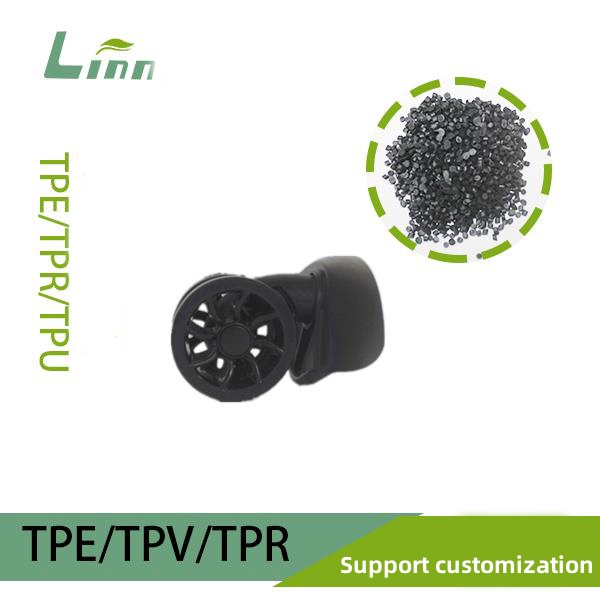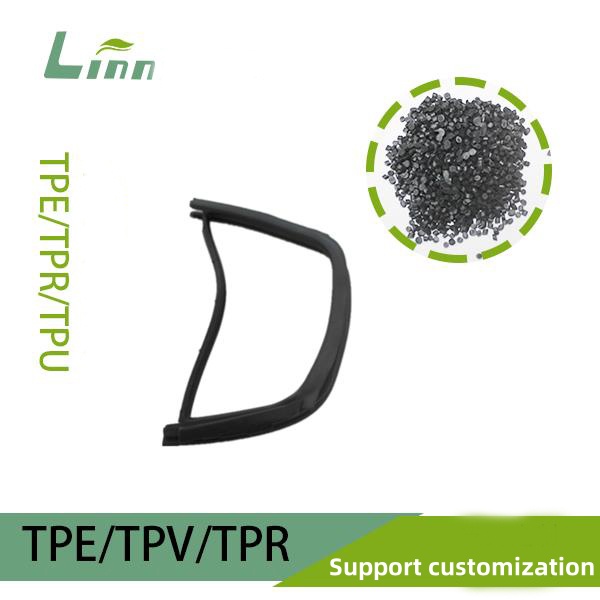As someone who has been working in the field of TPE (Thermoplastic Elastomer) extrusion for years, I know exactly how frustrating it can be when granules start forming during extrusion—a problem often referred to as “specks” or “particulate defects.” It causes immediate yield loss, disrupts downstream processing, and in worst-case scenarios, may lead to large-scale product rejection.
In this article, I’ll walk you through the root causes of granulation during TPE extrusion and provide actionable, real-world solutions from my hands-on experience. We’ll look at the issue from multiple angles—materials, processing conditions, equipment, and environment. This isn’t theory—it’s a guide built on production floor realities. You’ll also find tables, real-case examples, and a Q&A section at the end for quick reference.

1. Understanding TPE Extrusion and Granule Formation
Before jumping into solutions, let’s clarify what’s happening during TPE extrusion and how granule issues appear.
What is TPE?
Multi-phase polymer: TPEs are typically a physical blend of hard and soft segments (e.g., PP + rubber), designed for elasticity without chemical crosslinking.
Broad molecular weight distribution: They are ideal for extrusion but very sensitive to shear and temperature gradients.
Moisture-sensitive: Certain types like TPU easily absorb moisture, leading to bubbling, scorching, and granule formation during processing.
What Does “Granule Formation” Mean?
Surface defects: Small beads, specks, or white spots appear on the surface of extruded profiles, films, or tubes.
Location: Usually found on outer surfaces or inner walls of extruded parts.
Impact: Poor appearance, adhesion issues, and sometimes full batch rejection.
2. Five Main Root Causes of Granule Formation
| No. | Category | Symptoms | Common Root Causes |
|---|---|---|---|
| 1 | Material Issues | Impurities, blooming additives | Poor-quality resins, moisture |
| 2 | Temperature Zones | Burn marks, unmelted pellets | Improper barrel zone temperatures |
| 3 | Excessive Shear | Gas bubbles, chain breakdown | High screw speed, poor screw design |
| 4 | Filtration Faults | Specks, black dots | Clogged or mismatched screen mesh |
| 5 | Humidity Control | Micro-explosions or blistering | Inadequate drying, high ambient RH |
We’ll now look into each factor in more depth.
3. Deep Dive: Causes and Corrective Actions
1. Material Issues: Resin Handling & Preprocessing
Batch Control: Always verify resin lot numbers and specifications before loading. Stay consistent with suppliers and formulations.
Drying: For hygroscopic materials like TPU or SEBS, dry at 80–100°C for 4–6 hours. Target moisture content: <0.02%.
Contaminant Control: Install magnetic separators and vibration sieves at the hopper inlet.
Anti-static Additives: If you’re using powder-based fillers or pigments, adding 0.2–0.5% antistatic agent can help prevent clumping.
Pro Tip: Even after drying, recheck moisture content if the material has been stored for more than 2 weeks or exposed to humid conditions.
2. Temperature Control: Fine-Tuning the Barrel Zones
Recommended Temperature Profile
| Zone | Target Temperature |
|---|---|
| Hopper | 50–60°C |
| Feed Zone | 150–170°C |
| Transition | 180–200°C |
| Metering | 200–220°C |
Thermocouple Calibration: Recalibrate sensors every 3 months. Acceptable tolerance: ±2°C.
Cooling System: Equip rear barrel zones with water jackets or oil cooling loops to avoid overheating the metering section.
3. Shear Forces: Screw Design and Speed
Screw Geometry: Opt for deep flight screws for better melt homogeneity and reduced back-pressure. Twin-stage mixing sections work well for certain blends.
RPM Limits: Ideal screw speed: 30–60 rpm. High speeds might increase output but create localized overheating.
Back Pressure: Maintain at 5–15 bar for stable melt flow and effective degassing.

4. Screen Pack Filtration
Mesh Size: Use 80–120 mesh stainless steel screen packs. For heavily filled compounds, try a two-layer stack: 120 → 80 mesh.
Pressure Monitoring: Install a differential pressure sensor. When ΔP exceeds 0.5 MPa, it’s time to change the screen.
Cleaning Cycle: Clean screen packs every 8–12 hours using high-pressure wash or solvent soak.
5. Environmental Humidity
Dehumidification: In humid climates, use industrial dehumidifiers in critical zones. Target RH: 40–60%.
Sealed Storage: Use sealed hoppers with PTFE gasket lids and moisture-lock valves at feed ports.
4. A Systematic Troubleshooting Framework
Here’s my tried-and-tested four-step framework:
Diagnose
Collect samples and processing logs
Visual inspection + moisture test
Isolate
Evaluate material → temperature → shear → filtration → humidity
Compare with baseline SOP curves

Test & Verify
Make adjustments in small batches
Use microscopy or visual comparison to evaluate defect improvements
Optimize & Standardize
Document the changes into standard operating procedures (SOPs)
Implement Key Process Indicators (KPIs) for tracking
5. Real Case Example from Production
Background
In early 2024, a TPE tubing line at our plant started showing random granules across all batches, causing a 5% defect rate.
Investigation Results
Resin moisture: 0.15% (way above the 0.02% limit)
Mid-zone temps were 10°C higher than set
Screw speed: 80 rpm (too fast for that compound)
Filter mesh clogged and sensor failed to trigger alarm
Fixes Implemented
Redried resin to <0.02%
Recalibrated temperature zones
Reduced RPM to 50
Replaced with 80 mesh screen + installed new ΔP sensor
Result
Granule defects dropped from 5% to 0.2%
Yield improved by 12%
Cost savings per shift: ~USD 500
6. Pro Tips & Optimization Tools
Inline Monitoring Systems: Add sensors for melt temp, torque, pressure differential, and resin moisture.
Staff Training: Monthly workshops on preventive maintenance and process troubleshooting.
Data Logging: Integrate with an MES system to enable full traceability and faster root cause analysis.
Compliance Testing: Use standards like ASTM D638 and ISO 527-1 for tensile strength and elongation tests.
7. Quick Q&A for Troubleshooting
Q1: How can I quickly tell if the issue is temperature or moisture-related?
A: Start by measuring moisture content. If it’s >0.05%, drying is your priority. Otherwise, check barrel temperature readings against your set profiles.
Q2: Why do we reduce mesh size step by step?
A: Gradual reduction (e.g., 120 to 80) distributes pressure more evenly, preventing sudden clogs or damage to downstream equipment.
Q3: Will reducing screw speed hurt productivity?
A: Slightly—maybe by 5–10%. But you’ll likely see a much larger gain in yield and quality, which outweighs the throughput drop.
Q4: Any quick fix for high workshop humidity?
A: Use localized drying boxes at the hopper inlet and introduce mini airflow dehumidifiers for small-scale mitigation.
Q5: How to set the right pressure alarm value for screen packs?
A: Take 80% of your historical pressure peak just before past screen changes—that’s a good threshold for alarms.
Every production line is unique, and there’s no one-size-fits-all solution. But by focusing on root-cause diagnosis and systematic adjustment, you’ll be able to eliminate granule defects at the source. I hope this guide helps you troubleshoot smarter, faster, and more effectively.
Have more specific questions? Feel free to drop them in the comments—I’m always happy to share insights from the floor.





